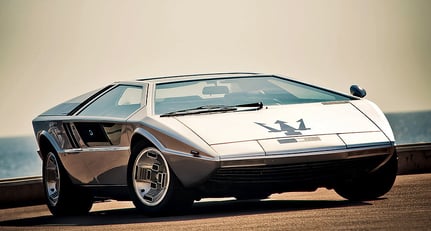It made its full debut in working order (sitting on Bora underpinnings) at the 1972 Geneva Motor Show, after appearing at the earlier Turin Show as a full-scale epowood model. According to Giorgetto Giugiaro, the design had been “in mind for at least two years” – but it’s likely that the first ideas would have sprouted in the designer’s head as early as 1968, and more specifically the première of the Bertone-styled Alfa Romeo Carabo. It was that car which presaged all the angular activities of the seventies.
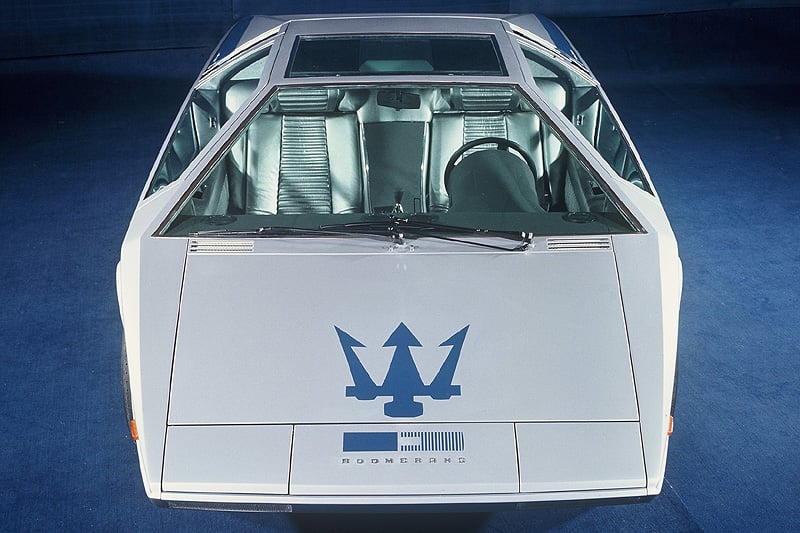
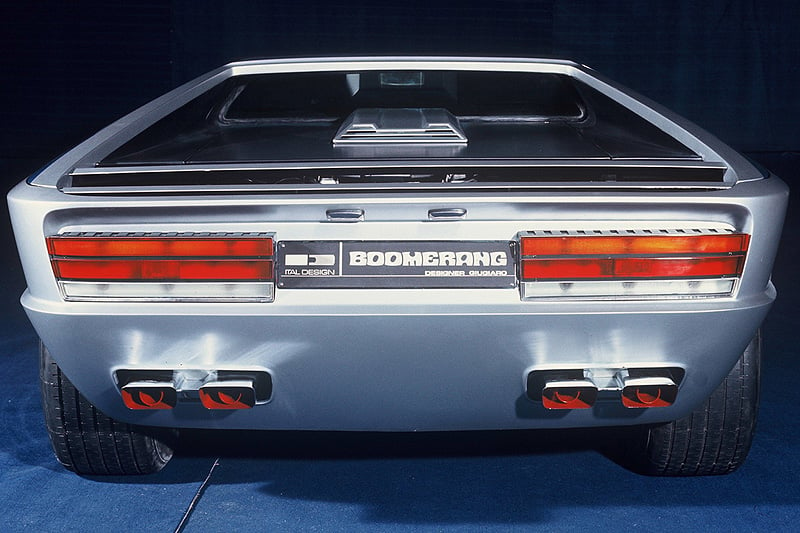
Giugiaro may have been pipped to the wedge-shaped post, but he wasn’t to be outdone. He brought together his favourite design flourishes from some of his then-recent concepts (which included Alfa Romeos Caimano and Iguana, as well as the VW/Porsche Tapiro) and melded them into an explosion of creativity. The resulting Boomerang was, according to Giugiaro, “drawn almost exclusively with a ruler” – a practice of which the ever-modest automotive sage has spoken unfavourably in recent times.
“When seeking new roads, one runs the risk of taking some wrong turns. Here the move towards ever-more graphic shapes went too far: the Boomerang may be pleasing as a shape, but from an aerodynamic standpoint it is a contradiction in terms.” Though we’re not shaping up for an argument with the man who holds the title of ‘Car Designer of the Century’, we’d suggest he was a little over-critical. It might not have had the aerodynamic virtuosity its arrow-like appearance suggested, but the Boomerang more than made up for it with stylistic flair – and also wrung a higher top speed (around 180mph) from the 4.7-litre V8 it borrowed from the Bora.
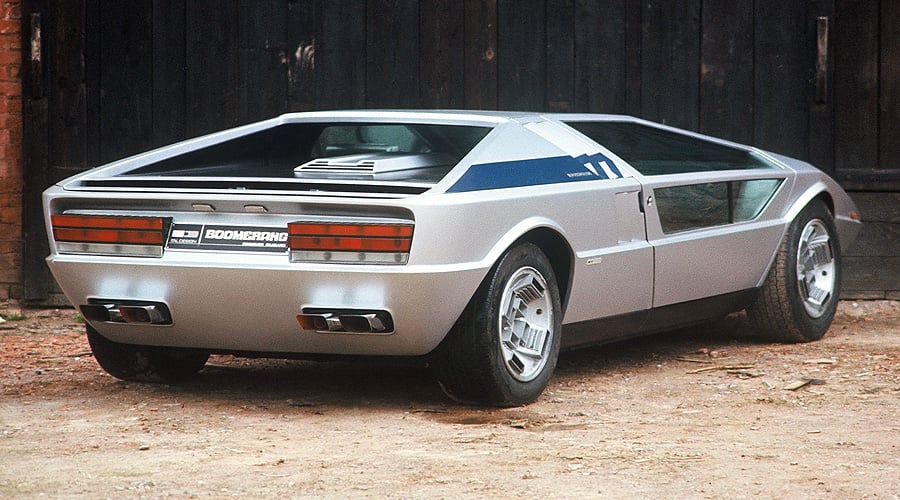
Giugiaro’s heavy use of geometry throughout the design allowed him to create an extremely taut appearance, but his focus wasn’t solely on the aesthetics. Despite the Boomerang only being a one-off concept, he devised a unique steering column design which prevented the driver being impaled in a front-end collision – such pioneering safety features are often omitted in experimental cars, a practice even more common in times when seatbelts had only recently become mandatory.
The unique steering wheel design also stemmed from a safety concern. The static central disc had originally been conceived to house an airbag – but for an unknown reason, it instead ended up being home to a radical instrument panel, which included the speedometer, tachometer and various other dials and switches. It is questionable, though, whether the steeply raked (13 degrees) windscreen that shared the same plane as the bonnet would have been production-feasible. Indeed, when designing the production Lotus Esprit a few years later, Giugiaro had to settle for a 24.5-degree angle to meet legislation.
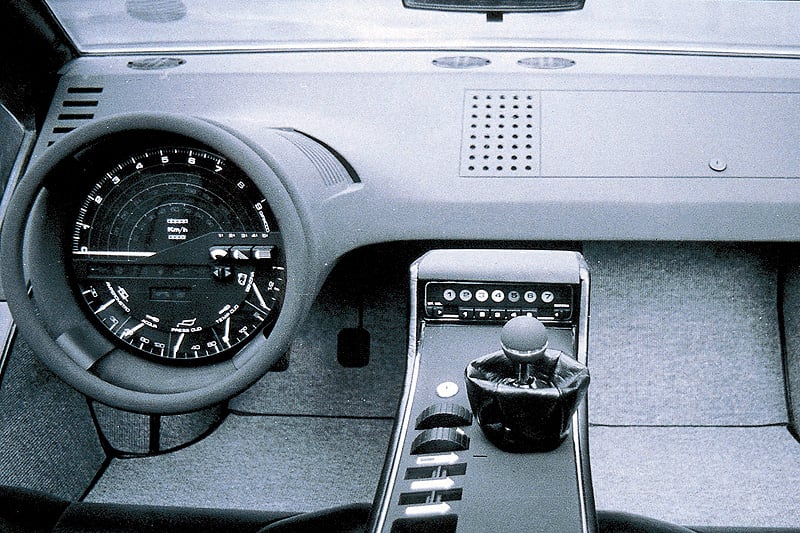
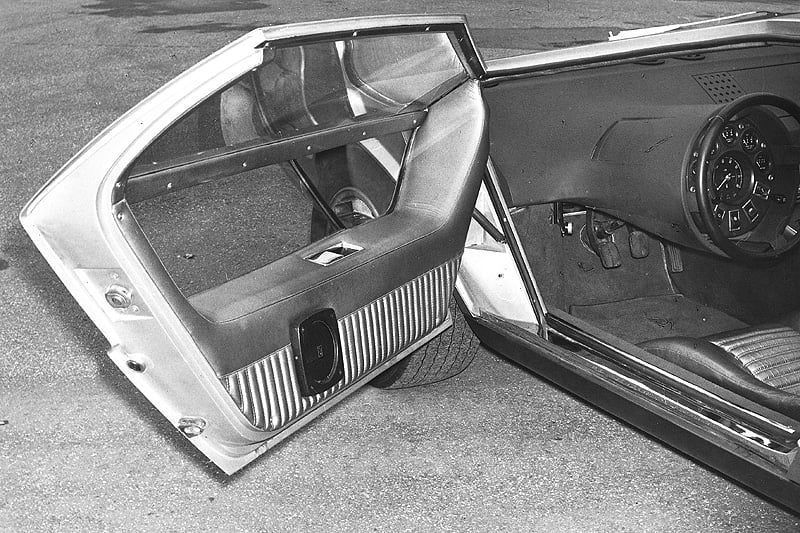
True to its name, the Boomerang has repeatedly swung back into the public eye. After a final motor show appearance in Barcelona in 1974, Italdesign sold the concept to a Spanish cabaret owner – back then, it wasn’t uncommon for one-off prototypes to be sold to private buyers: a preferred fate to that of many contemporary showstars, which are destroyed after a short spell in the limelight.
The Boomerang didn’t reappear until 1980, when a German enthusiast discovered it while holidaying in Spain. At the car’s second inauguration at the 1990 Bagatelle Concours, it was reunited with its creator who was on the event’s judging panel. Giugiaro duly signed its rear panel – a tattoo which the car was still proudly displaying when it was sold by Christie's in 2002 (fetching 721,750 euros) and again in 2005 (781,250 euros). It was also noted during the latter sale that the Boomerang had been approved for road use by the ultra-strict German TÜV, on the condition that it was fitted with yellow indicator bulbs.
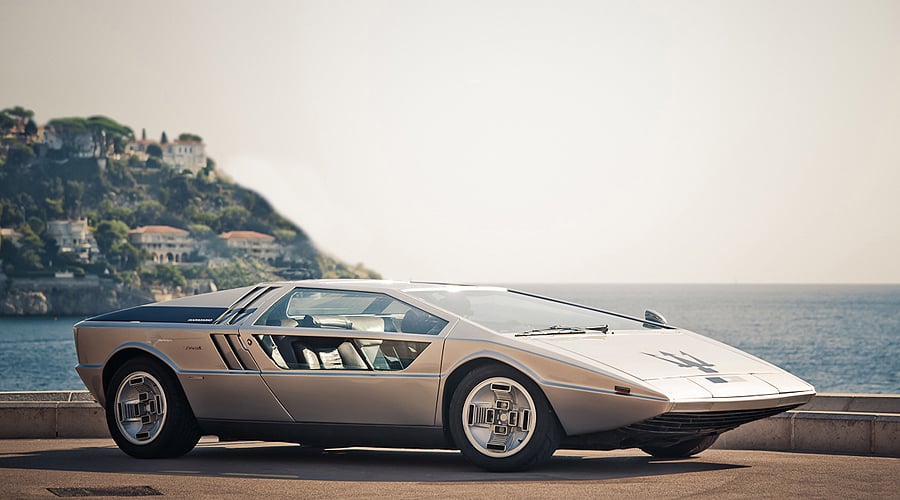
Ultimately, the idea behind the radical Boomerang concept might have been before its time, but it served not only as a precursor to later Giugiaro cars, but also as an advert for his design brilliance. In fact, it was apparently the Boomerang which convinced VW to appoint Giugiaro to design the original Golf – and we all know how that played out.
Text: Joe Breeze, with thanks to Christian Bolognesi of Italdesign
Photos: Franck Minieri, Maserati & Italdesign
Classic Concepts series
No. 1: 1969 Holden Hurricane
No. 2: 1976 Ferrari Rainbow by Bertone
No. 3: 1980 Aston Martin Bulldog
No. 4: 1959 Chevrolet Corvette Stingray
No. 5: 1976 Maserati Medici II
No. 6: 1952 Alfa Romeo C52 Disco Volante
No. 7: 1967 Lamborghini Marzal
No. 8: 1971 Matra Laser by Michelotti
No. 9: 1993 Aston Martin Lagonda Vignale
No. 10: 1968 Alfa Romeo Carabo
No. 11: 1981 Mercedes-Benz Auto 2000
No. 12: 1985 Saab 900 Turbo 16 EV-1
No. 13: 1978 Jaguar XJ Spider by Pininfarina
No. 14: 1964 Alfa Romeo Canguro by Bertone
No. 15: 1970 Stratos Zero by Bertone
